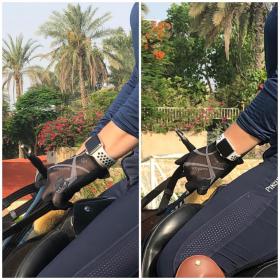[QUOTE=angelssix;n10659602]
I guess this is what I am getting at. The crux of the issue isn’t just about the hands, it’s the failure to require people to correct issues before allowing them to move forward. I know that debate has been held here before, so I won’t bet a dead horse. I guess I just have seen so many here talk about subjects related to how Dressage has gotten where it is and I see such a mess sometimes, it makes me wonder what happened to standards?
I get it, human nature…if one instructor doesn’t let me move up because I suck, someone else will. It really is up to the judge to change that. Sadly, I think there aren’t enough who are. And I am not jumping all over judges, believe me, I respect the two I know. Both of them are adamant about the proper position of hand, leg, and seat, amongst other things… I would love to see how they are marking people on tests.
I guess this might tie in a little with the thread about equitation in Dressage. I feel like we do need it. Instead of movements at levels, how about we start making sure the rider can actually do their job, first?
@MsM:
My definition for Puppy Paws: The rider holds the hands high with the backs facing more upwards. The wrist is “broken” and the fingers often lax. The result looks like a begging dog.
While there are good biomechanical reasons behind most position requirements, they are not absolutes. Some need to vary due to personal or horse constraints, but this should be a conscious choice, not from habit or a lack of control. And we see variation even among top, accomplished riders. Charlotte DJ tends to ride with her elbows straighter and more in front of her than is usually considered “correct”. Works for her!/QUOTE]
This is exactly what I mean by puppy paws, thanks!
At any rate, I know there was a thread about equitation in Dressage. I think we need to have an equitation component. If Dressage is all about training the horse, shouldn’t the rider have a certain competency level before being about to train a horse? That would include, in large part, a proper equitation component.
There is Dressage Seat Equitation. A group class for Juniors and AAs. You can even get different awards based on scores. They have been getting more popular over the years, at least in my region.
It’s not up to the judges to teach, they’re in fact not supposed to give comments that way.


 or what. I mentioned it generally to my coach (we are on familiar terms but I didn’t want to criticize any specific girl) and she made the point that the young girls tend not to have a lot of core strength yet, children don’t really have any and teens might not yet either. Which totally made sense to me.
or what. I mentioned it generally to my coach (we are on familiar terms but I didn’t want to criticize any specific girl) and she made the point that the young girls tend not to have a lot of core strength yet, children don’t really have any and teens might not yet either. Which totally made sense to me.